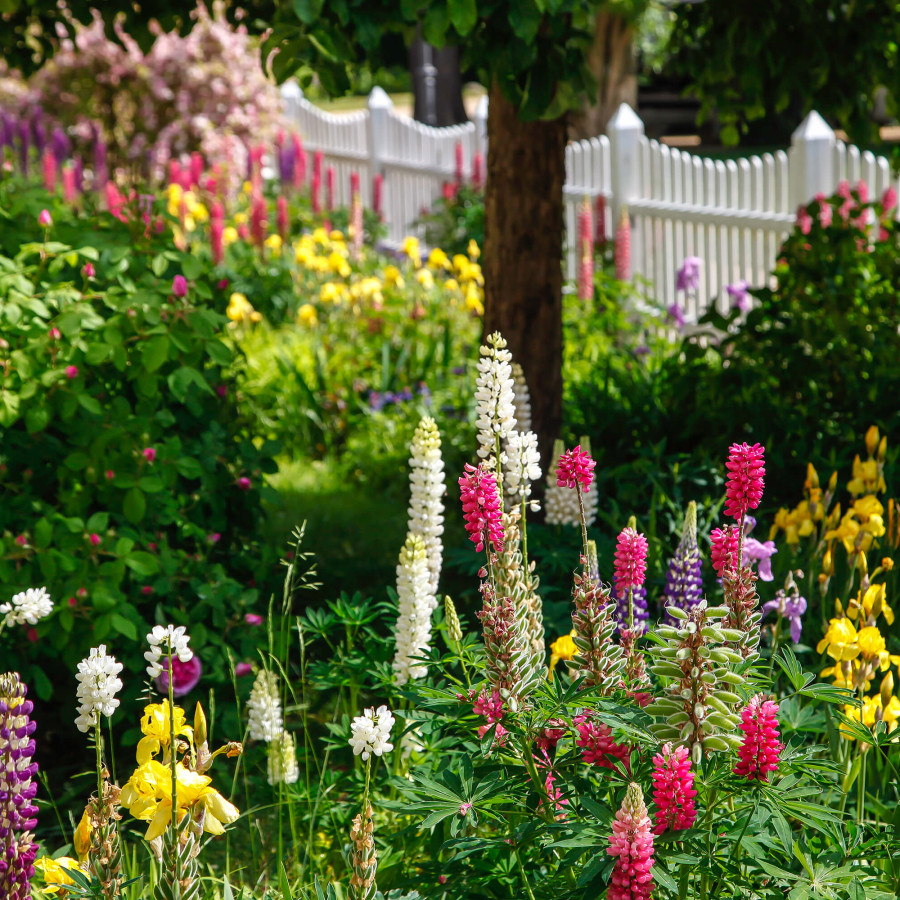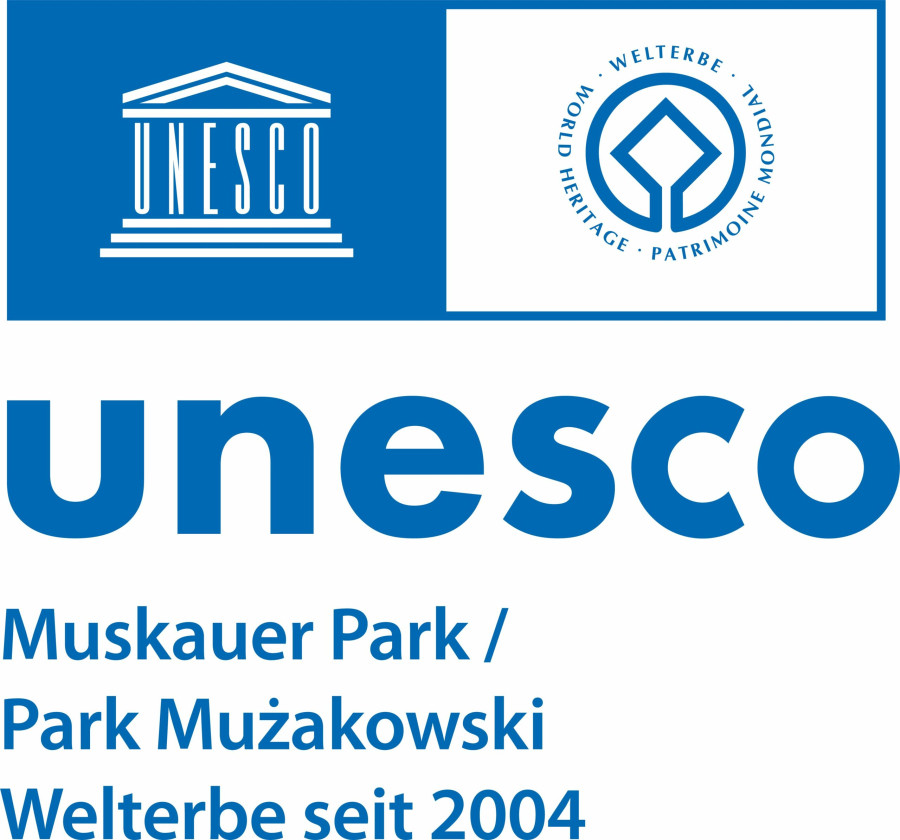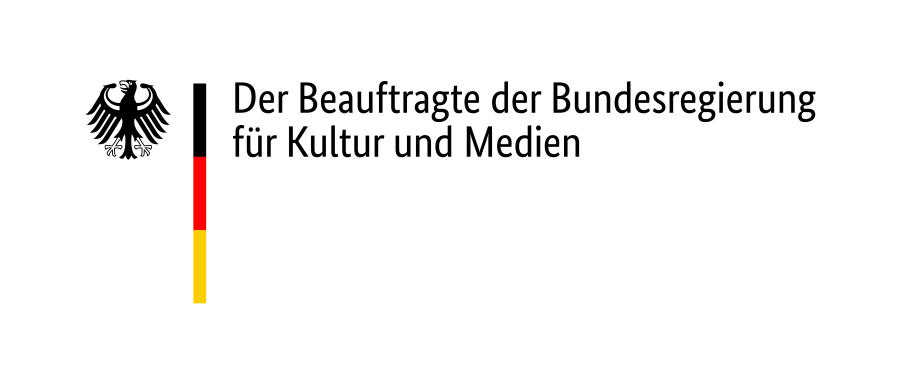Plan your visit
Muskauer Park resembles a work of art. Its creator, Hermann von Pückler-Muskau, himself liked to call it “nature painting”. The green prince’s landscapes are well thought out. It is therefore worth taking a guided tour and learn more about Pückler’s philosophy, stylistic elements and design colours.
The Muskauer Park Tourist Centre regularly offers guided tours of the landscape garden. If you are planning a visit in a larger group, you can easily book a tour in advance.
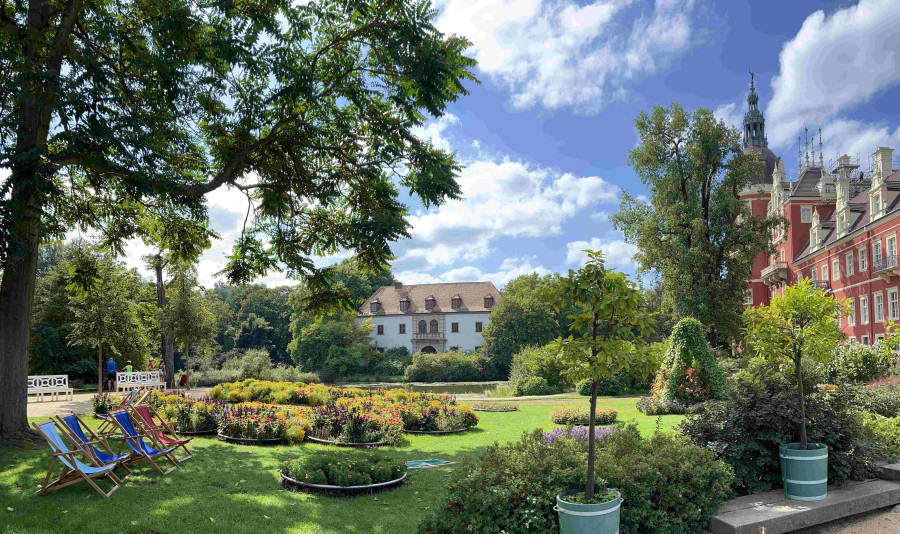
Path are the silent guides of the walker...Pückler-Muskau, Hints on Landscape Gardening, 1834
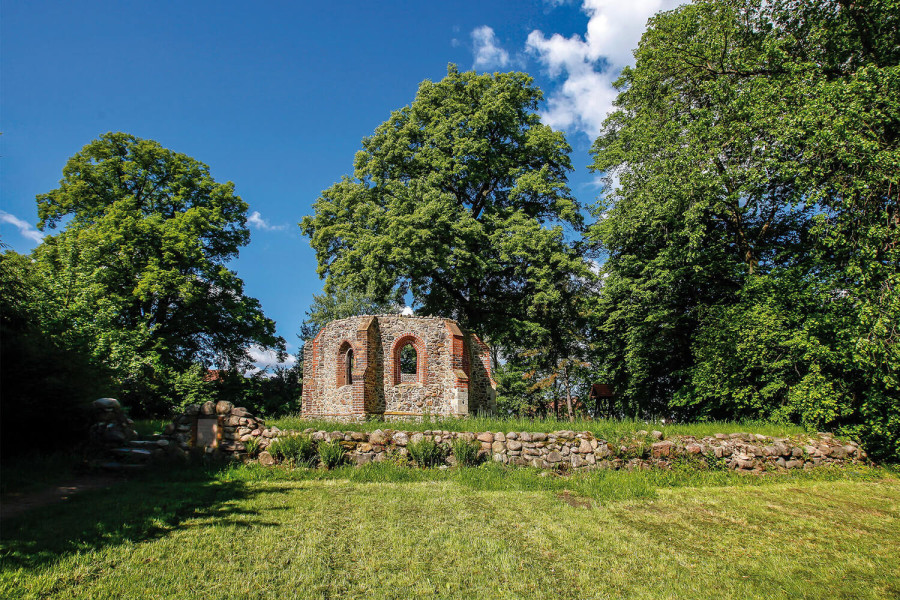
Church Ruins
The building, which was first mentioned in the 14th century, fell into disrepair after the last church service was held in 1785. Pückler used the ruins as an eye-catcher in his landscape composition.
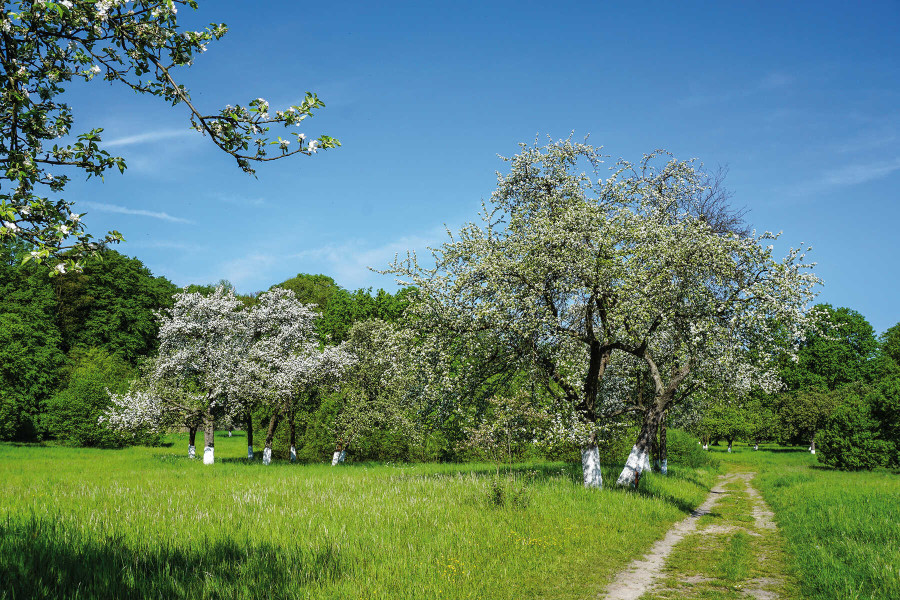
Tree nursery
A tree nursery for growing trees and shrubs was established on a plateau in the Oberpark during Pückler's time. At the end of the Second World War, the facilities were completely destroyed and the area subsequently became overgrown. The original structures, such as the dividing hornbeam hedge or the historic fencing, have been restored since 1998.
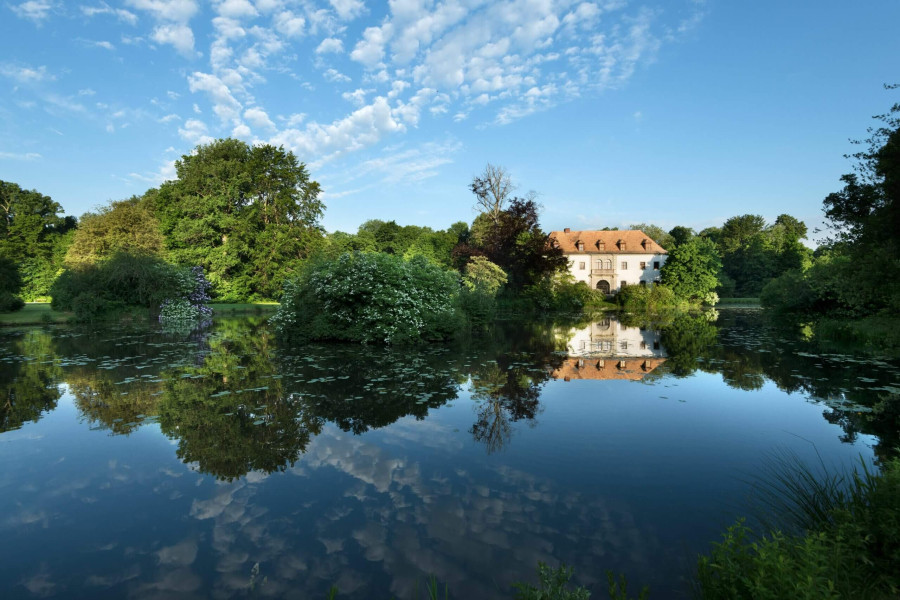
Old Castle
The former gatehouse to the outer bailey was probably built as an official residence in the first half of the 16th century and later rebuilt several times. Destroyed in April 1945, it was rebuilt between 1965 and 1984 in an older Baroque style.
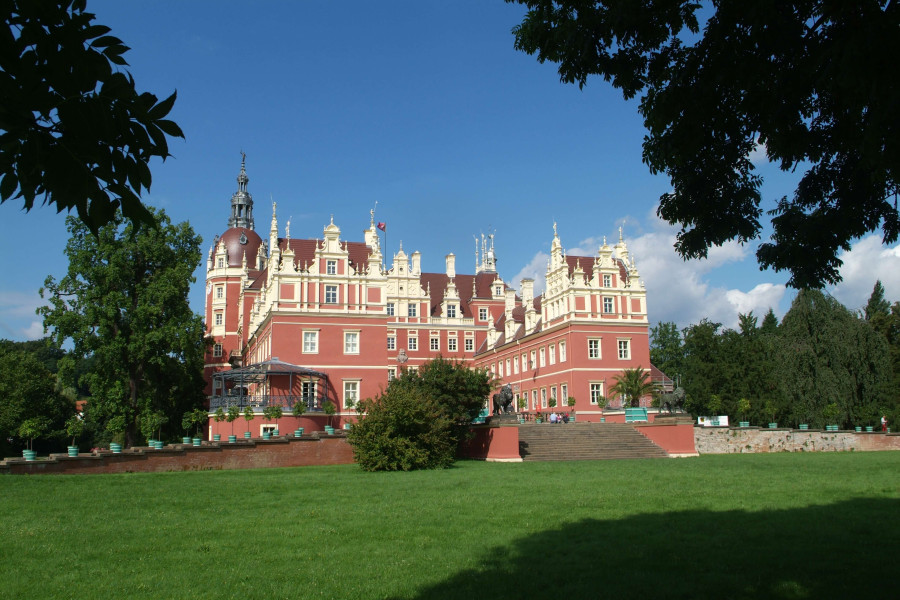
New Castle
First mentioned in 1245, rebuilt in the 17th century as a Baroque three-winged complex and decorated with elements in the Neo-Renaissance style in the 1860s, the building fell victim to arson at the end of the Second World War. From 1996 to 2013, it was gradually rebuilt with federal and state funds.
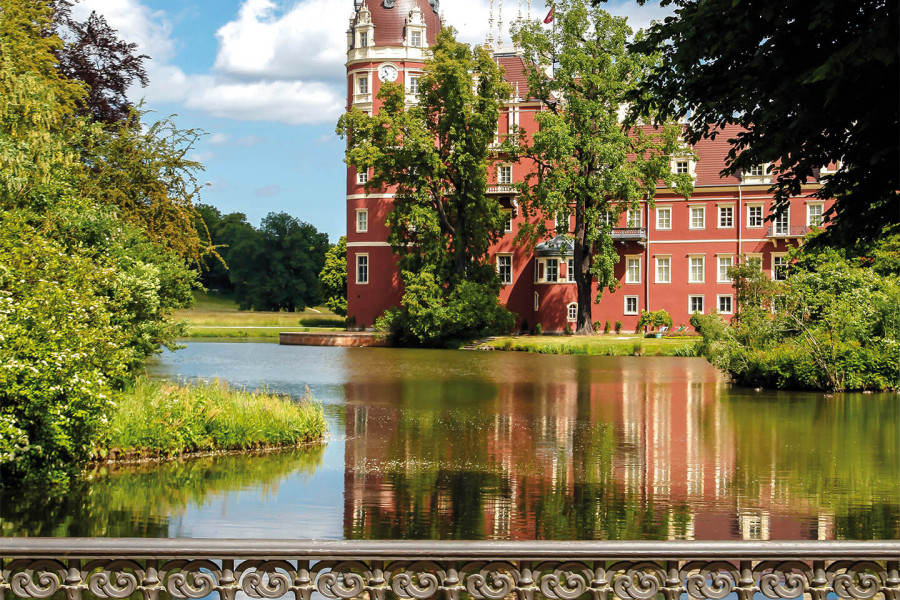
Carp Bridge
Where the Hermannsneiße flows into Lake Lucie, a cast-iron bridge crosses the water. From there, a popular postcard view of the New Palace opens up. The current version of the Carp Bridge dates back to Prince Frederick of the Netherlands.

Cavalier House
In Pückler's time, the original garden house served as a theater where the prince himself sometimes performed. The subsequent owners had the building converted several times and used it to accommodate guests, among other things. Between 1950 and 2009, it housed the moor baths.
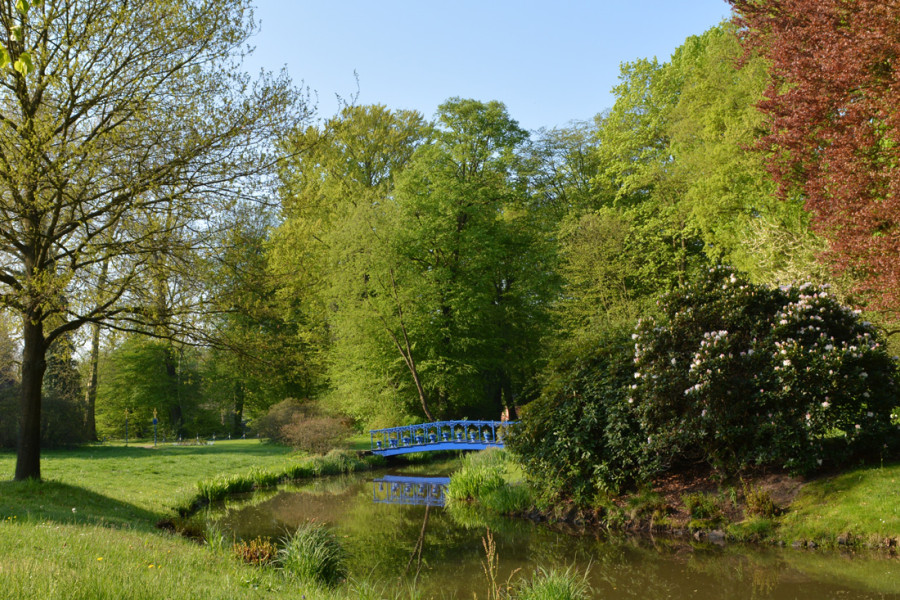
Fuchsia Bridge
Cross the striking cast-iron bridge to reach the Blue Garden, one of three flower gardens in the immediate vicinity of the palace. The ascending path leads over the “Liebeshöhe”, from where you can see as far as the Pücklerstein, and on into the Herrengarten.
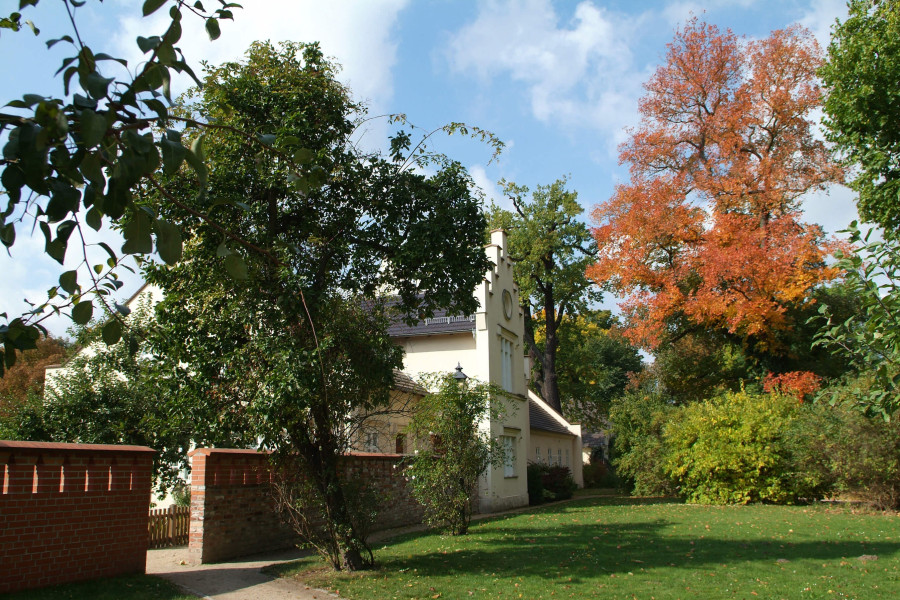
Historical farm buildings
Several historic farm buildings not far from the castle form a four-sided courtyard. The ensemble with the coach house, stables and residential buildings was rebuilt around 1900 in the Neo-Renaissance style, incorporating previous buildings.
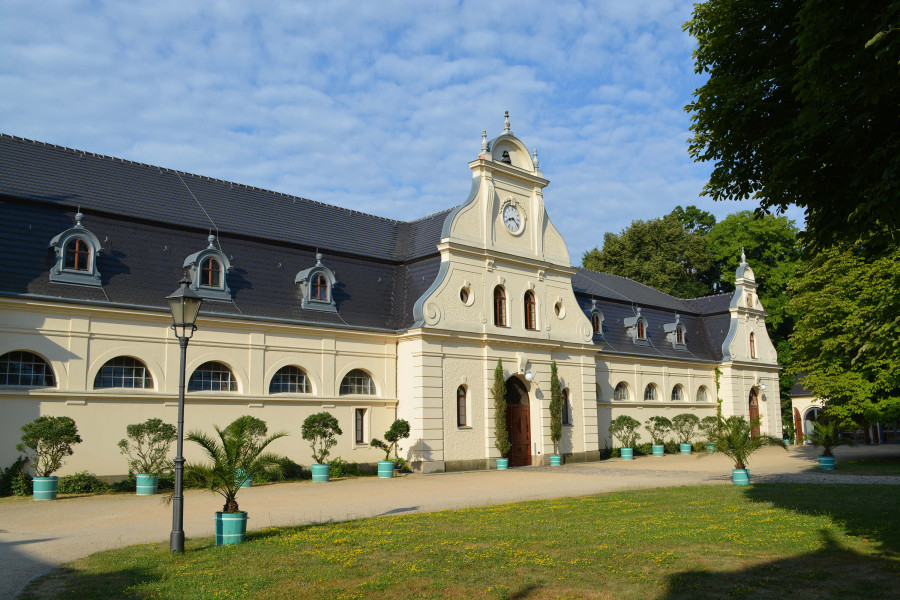
Marstall
All the inherited farm buildings in the vicinity of the palace were a thorn in Prince Pückler's side in terms of design. He therefore had a baroque predecessor to the stables simply demolished. Under the rule of Hermann Count von Arnim, the present building was erected in the neo-Renaissance style around 1900. It is still possible to guess that it belonged to the historic castle outbuildings as a stable. The stables are still used today as winter quarters for frost-sensitive potted plants.
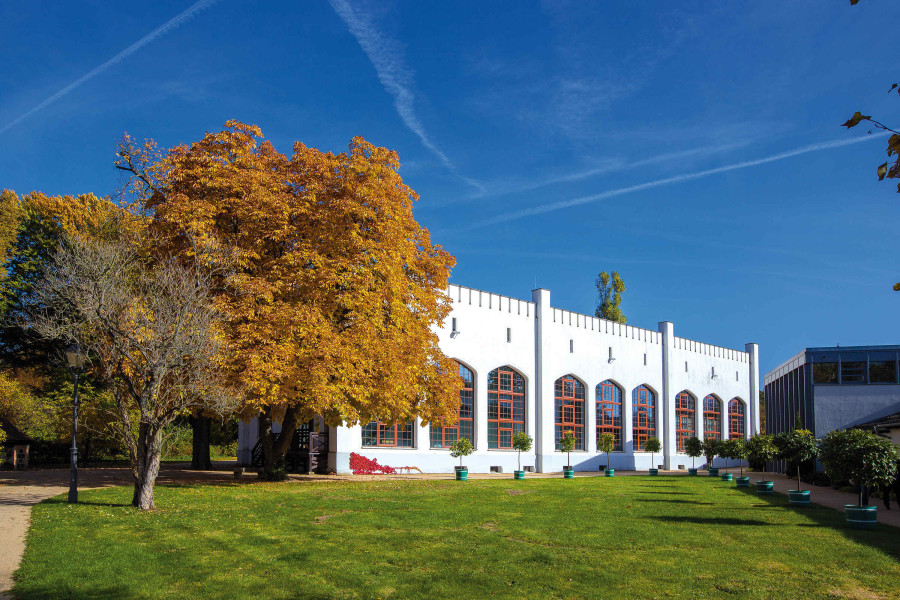
Orangery
The building was erected in 1844 in the Gothic-Moorish style on the foundations of a former brewery. The orangery is still used today as winter quarters for frost-sensitive potted plants, especially for the bitter oranges that grow on the castle ramp in summer.
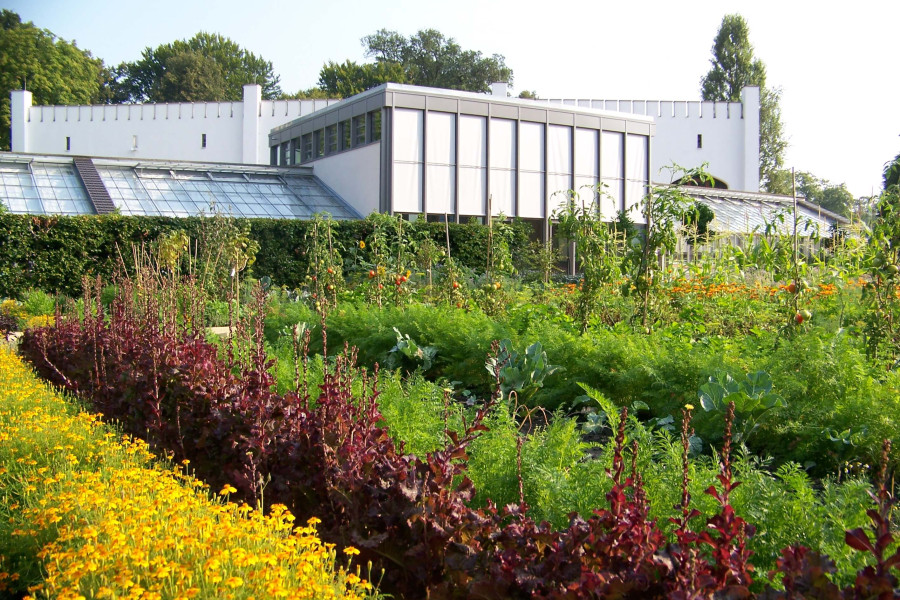
Castle nursery
The elaborately restored complex consists of several greenhouses and a kitchen garden with a talut wall for growing espaliered fruit. Just like in Pückler's time, pineapples are now growing again in the castle nursery.
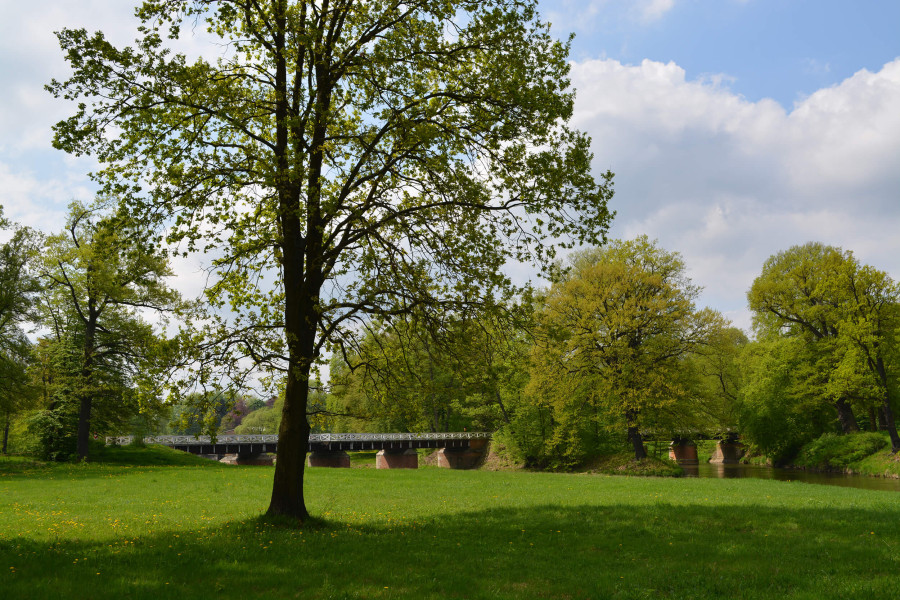
Twin Bridge
There was already a wooden bridge on this site during Pückler's grandfather's lifetime. Destroyed several times by floods, it was Prince Frederick of the Netherlands who had a solid structure built. The two-part link near the orangery was blown up in 1945 and restored between 2000 and 2003.
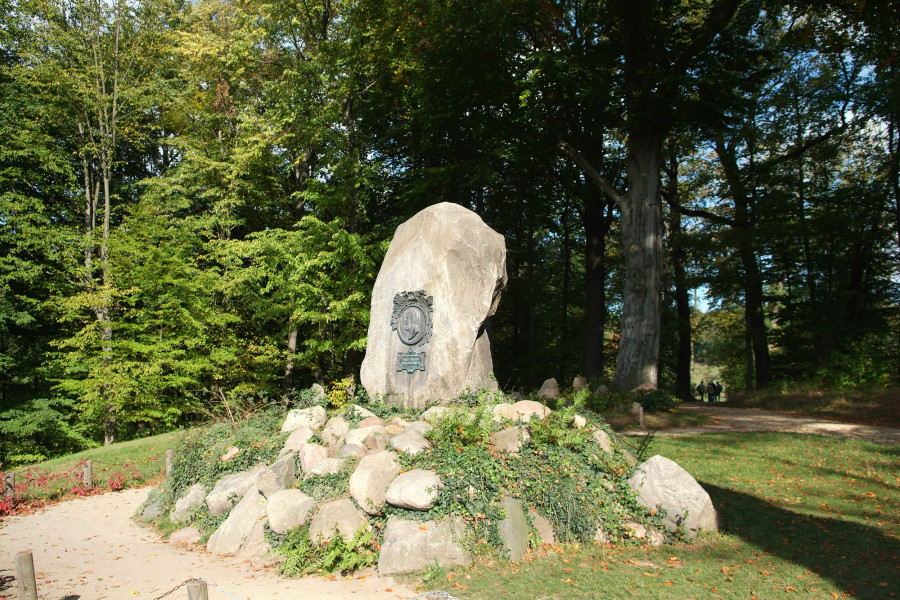
Pückler's stone
In 1901, the Counts of Arnim erected a boulder with a relief of Pückler to honor the park's creator. In the 1980s, the stone, which had been moved to Łęknica, served as a political memorial. In 1991, the boulder returned to its original location high above the Neisse. From there, one of the most beautiful views in Muskauer Park opens up.
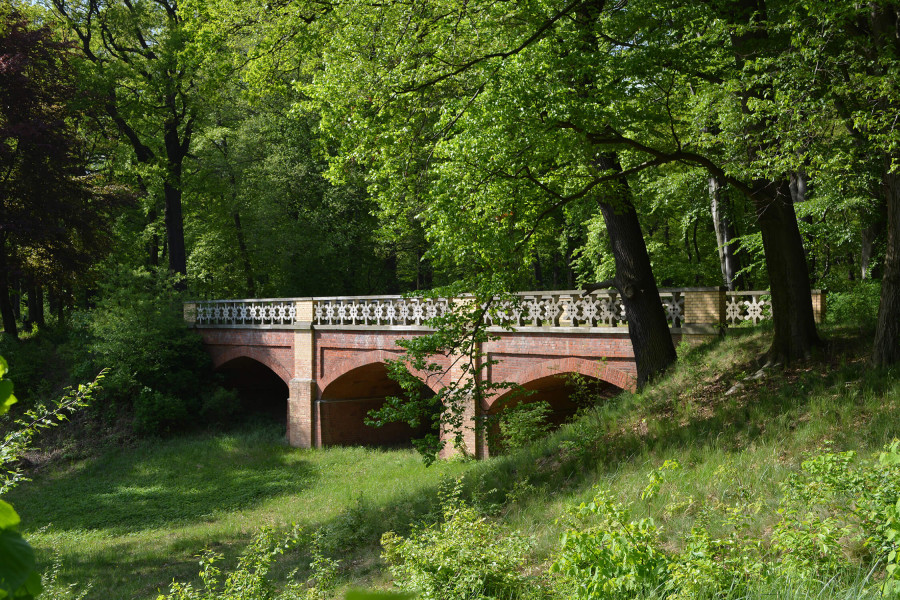
Prince's Bridge
The originally wooden building owes its name to a visit by the Prussian Crown Prince Frederick William IV in Pückler's time. The elaborate stone structure was not built until 1854 under Prince Frederick of the Netherlands.
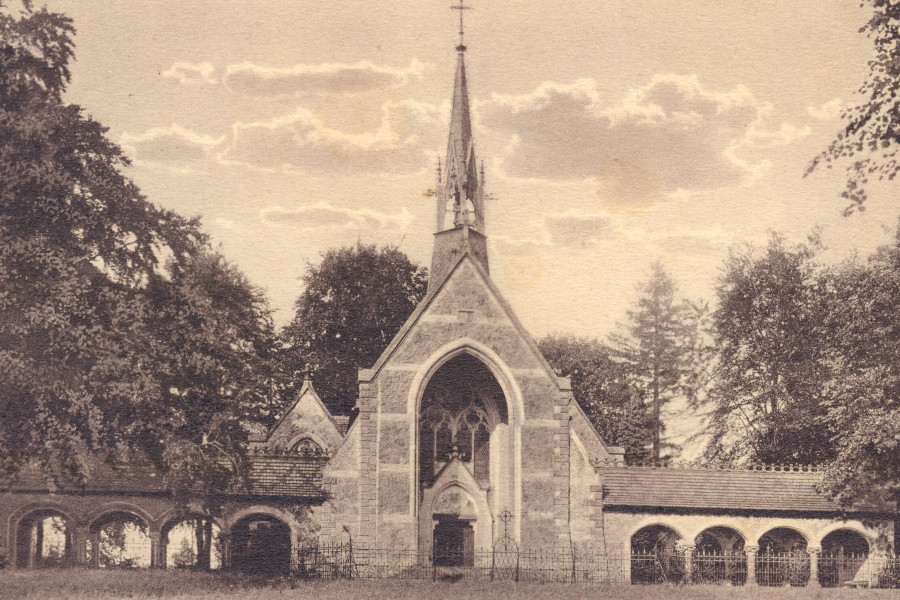
Mausoleum
On the upper edge of the terrace in the eastern part of the park, Pückler had planned a mausoleum in close view of his study in the palace, but never realized it. The von Arnim family built a memorial chapel and cemetery on this site in 1888, which was partially destroyed in 1945 and blown up in 1972. Today, a simple granite cross marks the former site.
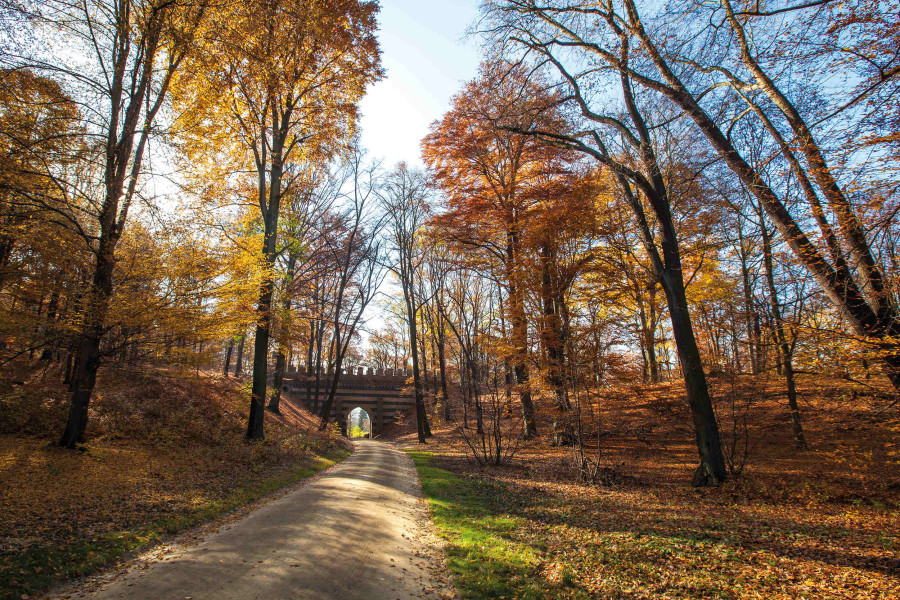
Lord's Hill Viaduct
Like the Prince's Bridge, the impressive structure spans an ice-age gorge. Prince Frederick of the Netherlands had the viaduct built from bricks and cinder blocks in 1862.
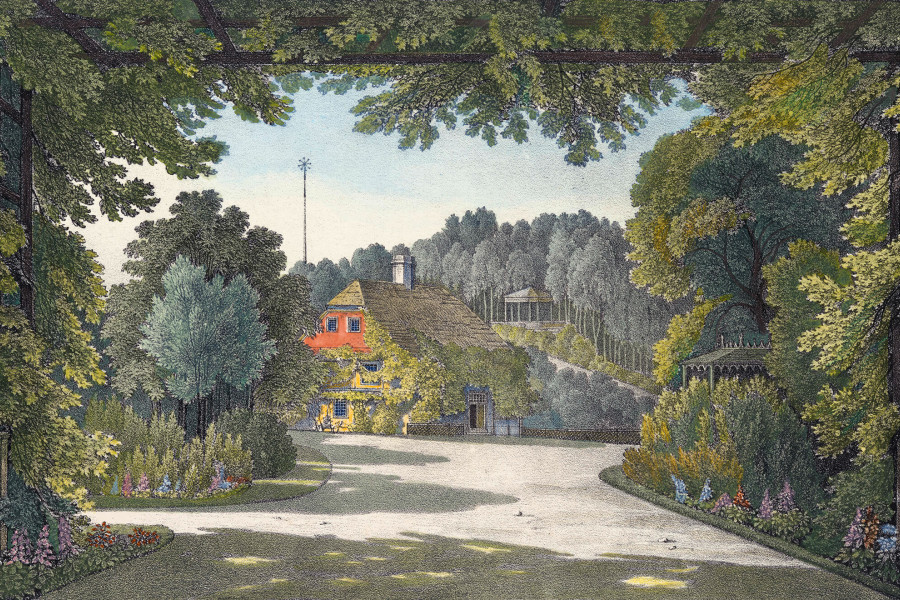
English Cottage
In 1820, Pückler had a small pub built in the English cottage style on a hill not far from the English Bridge. The associated buildings were demolished after 1945. Today, the former location of the main building is indicated by a brick floor plan and a romantic viewing pavilion has already been restored.
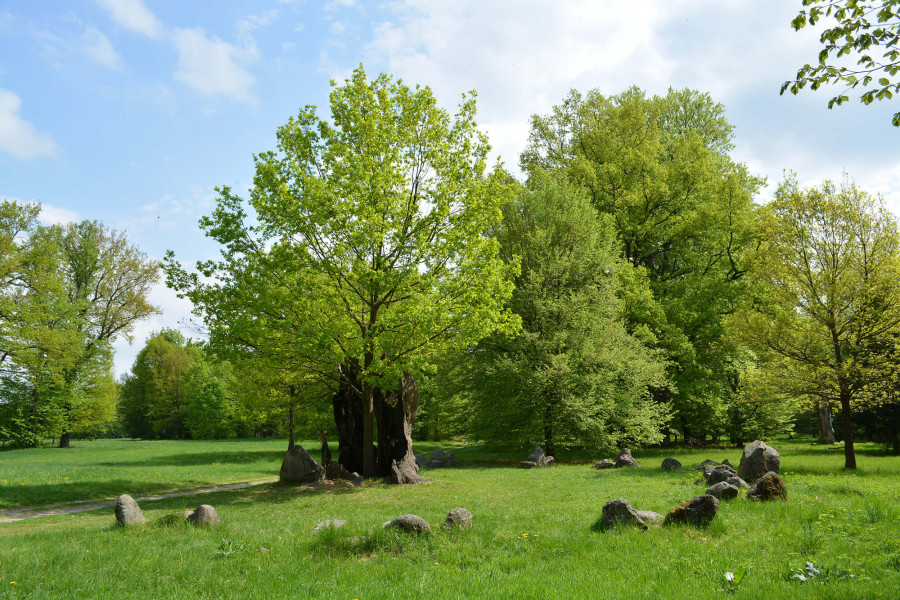
Hermann's Oak
Pückler grouped nine stone seats made of erratic blocks in a semi-circle around an ancient oak tree at this location, thus associating it with an old Germanic meeting place. However, the name of the once huge tree could also refer to Pückler himself, his beloved grandfather of the same name or perhaps to the Cheruscan prince. Today, a young tree is growing in the remains of the dead oak trunk.
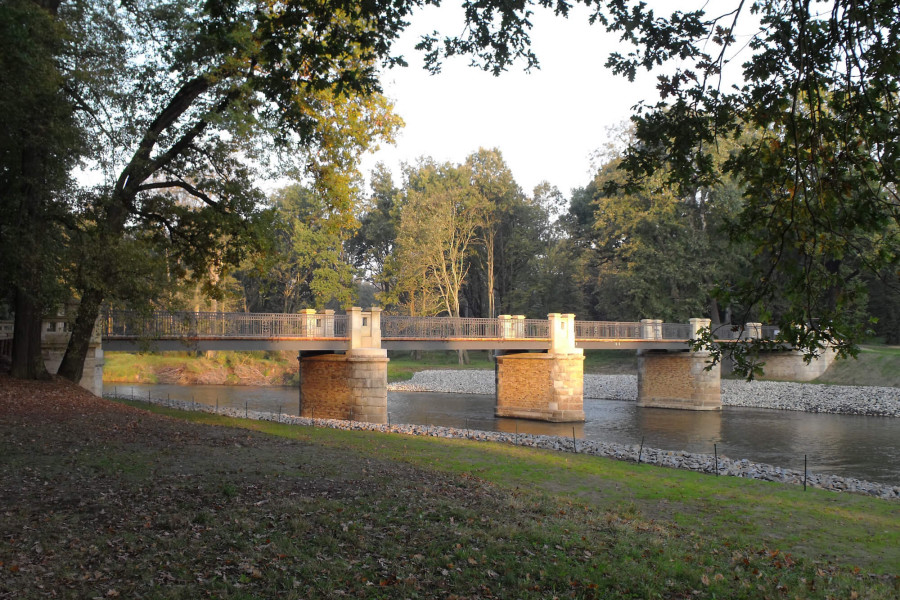
English Bridge
The path to the English House led over this structure until it was blown up in 1945. The English Bridge was rebuilt between 2009 and 2011. This completed the cross-border circular route through the park.
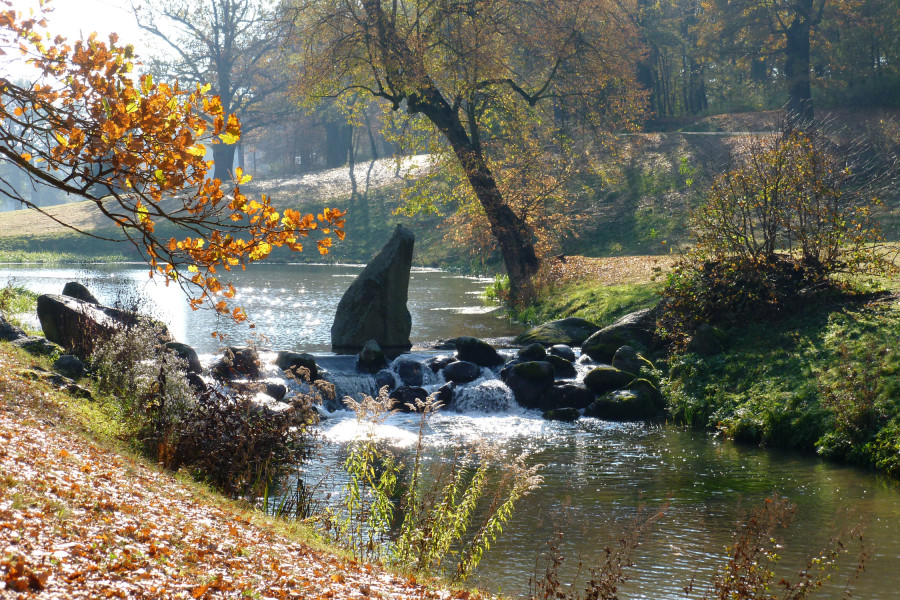
Oak Lake
The bay-rich body of water is an artificial lake that Pückler excavated in the north of his park as a counterpart to Lake Lucie. Narrow paths lead along the shore to romantic seating areas and to the bridge with a view of the Oak Lake waterfall.
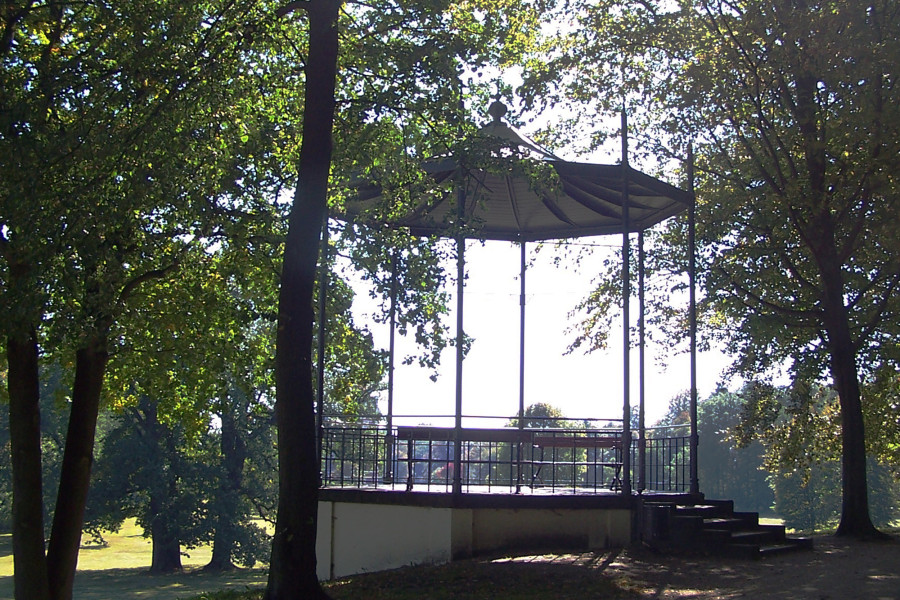
Gloriette
The filigree iron construction with a view of the castle stands at the end of the “Schnuckental”. Pückler laid out this very first park area in 1817 as a wedding present for his bride Lucie. Subsequently altered several times, the current version is based on photographs from the Arnim era.
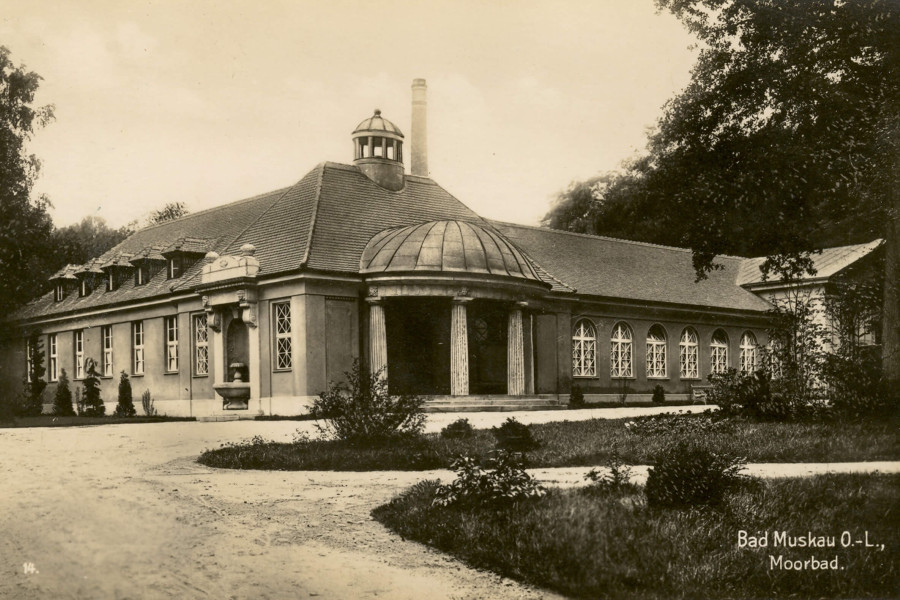
Domed Pavilion
The domed pavilion is part of the former Moorbadehaus, which was last rebuilt in 1913/14. Like the Villa Bellevue, the Villa Pückler and the Turmvilla, it was part of the “Hermannsbad”, which Pückler and Lucie opened in 1823. Today it houses a small exhibition on the history of the baths.
Villa Pückler
Built in 1824 as a lodging house, Villa Pückler is the oldest building in the Hermannsbad. Villa Pückler is currently being renovated for a new permanent exhibition on Pückler's travels in the Orient.
Arrival
02953 Bad Muskau
By car
Directions to Bad Muskau:
from Berlin and Cottbus on the highway A 15 via federal road B 115
from Dresden and Bautzen on the highway A 4 via federal road B 156
from Görlitz via federal road B 115
There is a paid visitor parking lot for cars and coaches on the Neißedamm. Visitors should follow the signs to Muskauer Park (or Fürst-Pückler-Park Bad Muskau).
By bike
Muskauer Park can be reached by bike via several supra-regional cycle paths that run along the Neisse through the landscaped garden. There is a bike rental shop with a workshop in the castle grounds.
Oder-Neisse-Cycle Path: 630 km from the source of Neisse river to the Szczecin Lagoon
Prince-Pückler-Path: 500 km on the tracks of Pückler
Froschradweg (Frog cycle path): 260 km through the Upper Lusatian heath and pond landscape
Further information is available: Marketing-Gesellschaft Oberlausitz-Niederschlesien GmbH
Contact: +49 3591 48 770 │ www.radwandern-oberlausitz.de
By public transportation
Travelers first take the Ostdeutsche Eisenbahn GmbH (ODEG) trains to Weißwasser. There they board the regional night buses to Bad Muskau (bus line 80). The bus stop “Kirchplatz” in the town is just a few steps away from Muskauer Park.
From April to October, visitors can also use the forest railroad to travel from Weißwasser to Bad Muskau.
Bus service Upper Lusatia (moVeas)
Contact: +49 3588 25 91 730 (Information from Mo – Fr, 07:00 am to 05:00 pm) │ www.ov-oberlausitz.de
Company for the operation of the Waldeisenbahn mbH Weißwasser
Contact: +49 3576 20 74 72 │ www.waldeisenbahn.de
By Kromlau Blossom Express
From 19.04.2025, passengers will be able to travel between the Kromlau Rhododendron Park and the Fürst Pückler Park in Bad Muskau on the Kromlau Blossom Express. The “Kirchplatz” stop in Bad Muskau is just a few steps away from Muskau Park.
Further information on travel times and prices can be found here.
Muskauer Park Tourist Center
If you are looking for some ideas for your stay in the World Heritage Site or for your vacation in the surrounding area, the Muskauer Park Tourist Center is the right place for you. In the west wing of the New Palace, visitors can obtain competent information as well as extensive printed information material. Guided tours can also be booked directly at the tourist center, which is also the starting point for the tours.
Contact: +49 35771 63 - 100 | +49 35771 63 – 109 | info@muskauer-park.de
open from 28.03. to 31.10.2024, daily from 10:00 am to 06:00 pm

Further information
Accessibility
The rooms of the permanent and special exhibition in the New Palace as well as the pineapple exhibition are barrier-free. The steps on the castle staircase can be bridged with a wheelchair lift. If you need help, press the call button. In the building itself, an elevator takes guests to the first and second floors. There is a disabled toilet on the first floor. The ascent to the castle tower is not barrier-free.
There is also a call button at the entrance to the castle nursery, which wheelchair users, visitors with baby carriages or walking frames should press if they want to visit the pineapple exhibition and the kitchen garden.
Most of the paths in the central park are paved with sand. Wheelchair users only have limited access to the Blue Garden due to a few steps on the paths. Climbs are to be expected, especially on the eastern side of the landscape garden.
Park rules (valid since 01st April 2020)
Muskauer Park is a work of garden art of universal significance and is a UNESCO World Heritage Site.
Entering the park area in the dark and in adverse weather conditions, especially in stormy winds, gales or hurricanes (wind force 8 and above), is at your own risk. Only a limited winter service is provided.
The best possible road safety can only be guaranteed on the developed paths, which is why it is expressly recommended that you only use these. Nevertheless, in extremely hot and dry periods, unforeseeable and dangerous heavy traffic can occur in these sections too, which is why the park must always be used with increased attention and caution during these periods.
Pedestrians have absolute priority in the park.
Cycling in the park is only permitted when using the developed paths, but not in the flower gardens.
Access by motorized vehicles of any kind is only permitted with special permission and at walking speed.
Dogs must be kept on a short lead.
The waste bins in the central park area are to be used for the disposal of waste generated during visits to the park. Litter must be taken to the peripheral areas of the park. Littering, leaving waste in the park outside the waste bins and illegal waste disposal are prohibited.
Commercial activities of any kind (e.g. photography and filming for commercial purposes) require prior consent. This also applies to the display of posters and signs as well as other advertising.
The operation of model aircraft and unmanned aerial systems (“drones”) in the park is prohibited. Exceptional permits can be applied for.
Open fires, barbecues and the setting off of fireworks are strictly prohibited without a special permit.
It is not permitted to erect tents, tent-like structures or other dwellings and to spend the night outdoors.
Violations of the park regulations will be punished.
Parking fees
Car / motorcycles
1,50 € = parking duration up to 1,5 hours
2,50 € = parking duration up to 3,0 hours
4,00 € = parking duration up to 6,0 hours
5,00 € = parking duration up to 12,0 hours
0,50 € = every additional hour
Buses / camper van (14 parking spaces)
15,00 € = parking duration up to 4 hours
18,00 € = parking duration up to 12 hours
3,00 € = every additional hour

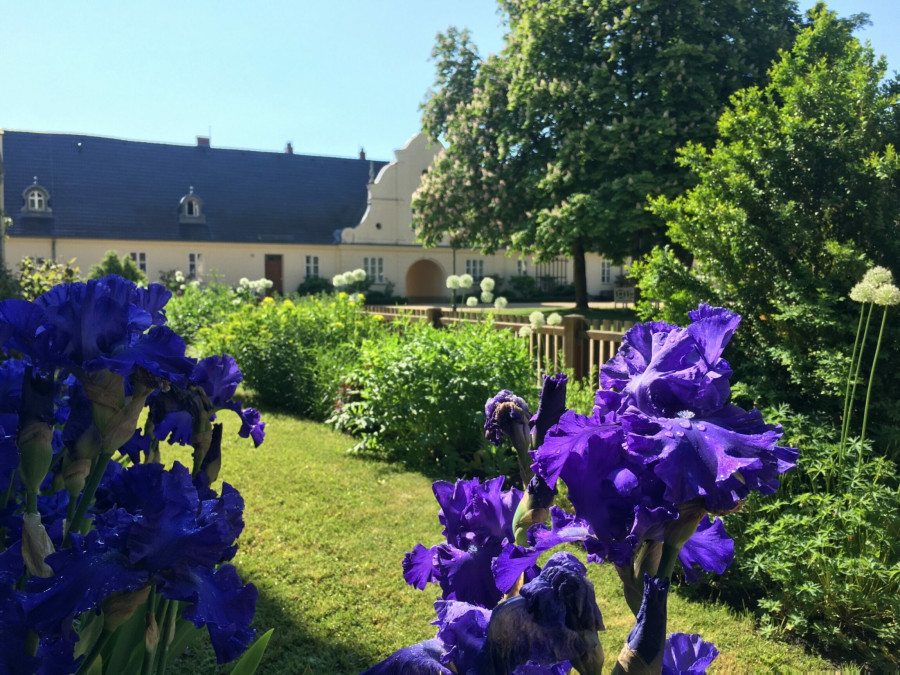
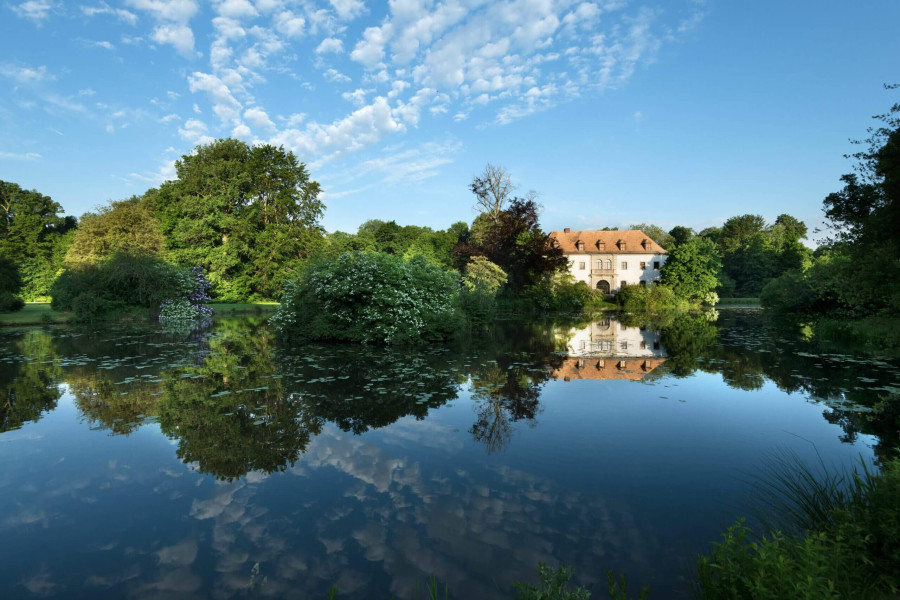
Staying overnight in Muskauer Park
Spending the night in the World Heritage Site has a very special charm. When the last rays of sunshine shine through the treetops in the evening or the mist rises from the meadows early in the morning, the park unfolds a special magic. For visitors who want to experience the landscape garden for more than just one day and in peace and quiet, four vacation apartments are available in the castle grounds.
